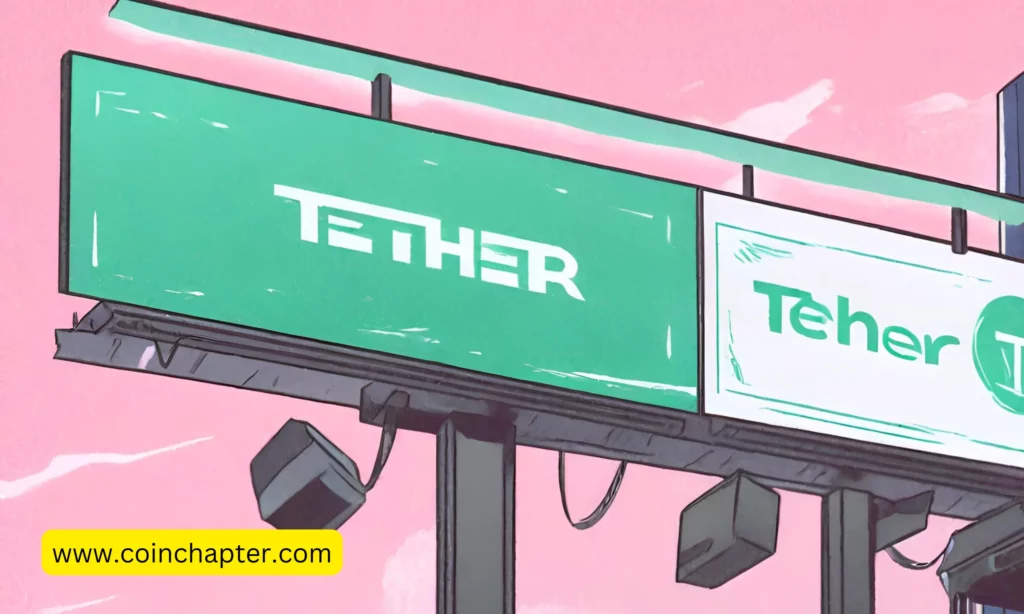
LUCKNOW (CoinChapter.com) — Tether is the largest stablecoin with a market capitalization exceeding $96 billion. However, it has faced growing scrutiny from regulators and industry experts over its reserves and compliance standards. A $41 million settlement with the Commodity Futures Trading Commission (CFTC) in 2021 revealed that Tether had falsely claimed its stablecoin was fully backed by US dollars for years.
JPMorgan analysts noted the rapid growth of stablecoins like USD Coin (USDC), which adhere to regular attestations of reserves. They argue more compliant stablecoins will thrive if regulators clamp down on tokens like Tether. Tether CEO Paolo Ardoino contested this view, emphasizing his company’s collaborative stance toward regulators and central banks.
Tether CEO Highlights Efforts to Boost Transparency
In response to criticism, Ardoino touted Tether’s quarterly attestations on reserves and company finances. He portrayed past compliance issues as growing pains for a fast-moving industry. Arduino contended that properly-regulated stablecoins could assist underbanked groups and drive financial inclusion.
Tether has pursued efforts to enhance transparency after its CFTC penalty. Specifically, it has engaged accounting firm BDO Italia to conduct quarterly attestations on Tether’s reserves and company finances.
According to Tether’s reserves attestation on Dec. 31, 2023, its excess reserves totaled $5.4 billion, providing full coverage for approximately $4.8 billion in outstanding secured loans included in the assets backing the USDT stablecoin.

Additionally, Tether’s reported profit of $6.2 billion for its fiscal year 2023 signals strides in consolidating corporate finances.
Regulatory Guidelines Emerging Worldwide
JPMorgan’s concerns echo wider moves by global regulators to develop crypto compliance standards.
China is the latest major economy to update anti-money laundering rules for cryptocurrency, setting a 2025 deadline to finish implementation. They join the US, Japan, South Korea, Australia, and others that have already put robust regulatory frameworks around digital assets in place regarding transparency and illicit financing.
India, too, has folded cryptocurrency into existing anti-money laundering regulations as part of a worldwide push towards better oversight. However, paths continue to diverge between jurisdictions. While shared principles anchor many new crypto rules globally, questions persist about how much harmony regulators can achieve.
With major players still charting regulation independently, businesses may confront fractured compliance obligations across borders. Yet some experts spot room for agreements on baseline supervisory standards, even if policy variations persist. As global cooperation aided past financial reforms, joint crypto accords could aid law enforcement while allowing well-regulated spaces for digital asset innovation.
Stablecoins Seen as On-Ramp for Billions of Unbanked Users
JPMorgan’s spotlight on Tether compliance has prompted discussion about how regulated stablecoins could enhance financial inclusion globally.
By pegging their value to fiat currencies, stablecoins create a bridge between mainstream finance and decentralized cryptocurrencies. In countries where local currencies fluctuate wildly, or traditional banking is limited, these digital assets provide a steadier means of payment and store of value.
Advocates argue that transparent, compliant stablecoins could empower unbanked individuals to participate in the global financial system. With oversight and accountability, Tether’s immense market presence positions it to advance financial inclusion meaningfully.
As regulators call for greater transparency, Tether now faces a test — can it address these concerns while still delivering on its promise to provide a more equitable financial alternative? Achieving both goals is challenging but critical for stablecoins to deliver economic opportunities to the communities that need them most.
Tether faces a Critical Phase to Prove Compliance
Regulators are intensifying oversight of cryptocurrencies, especially on stablecoins like Tether.
However, the crypto industry remains dedicated to compliance and transparency for long-term viability. Tether itself has charted a course from penalties to improved openness, underscoring the adaptability of digital assets.
Yet securing this market requires more than addressing risks – it means recognizing stablecoins’ promise for expanding access.
If Tether convinces regulators of its improved processes, it may aid linkage between the formal and informal financial spheres. But lingering uncertainty over Tether’s inner workings continues fueling bets on alternatives like USDC. How Tether follows fast-emerging stablecoin guidelines could make or break its financial inclusion goals.


